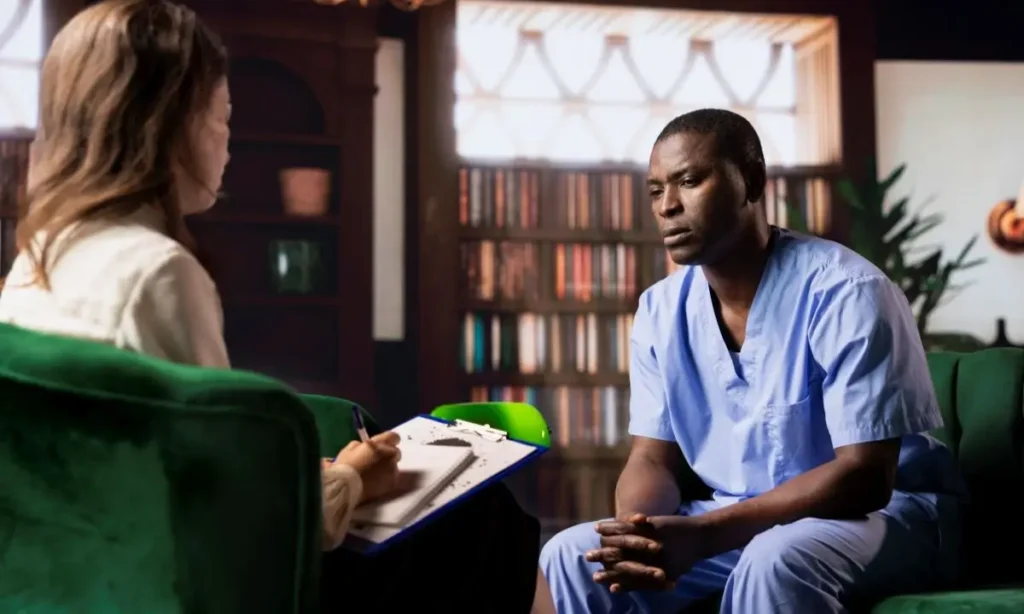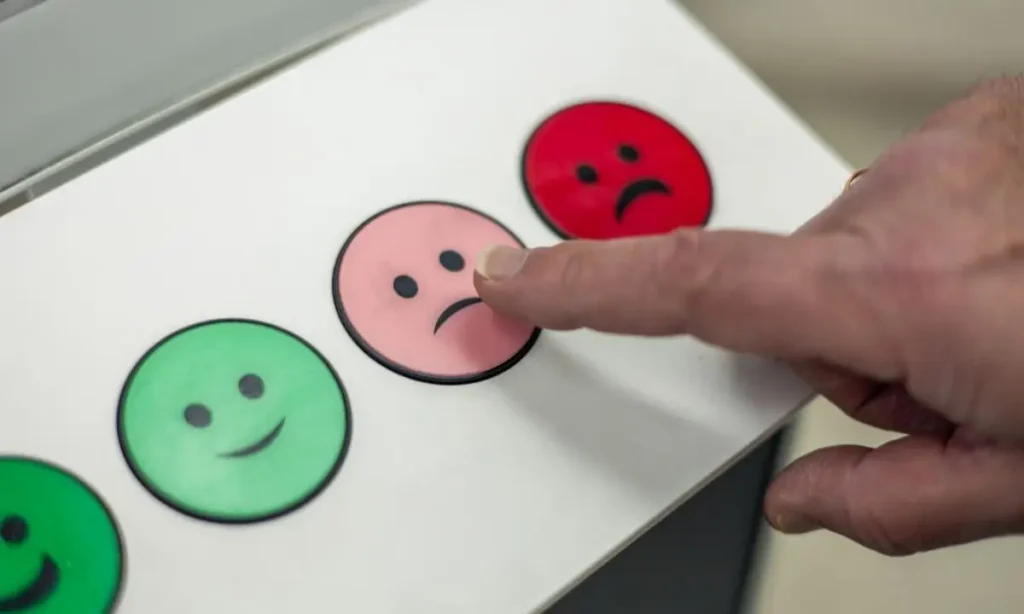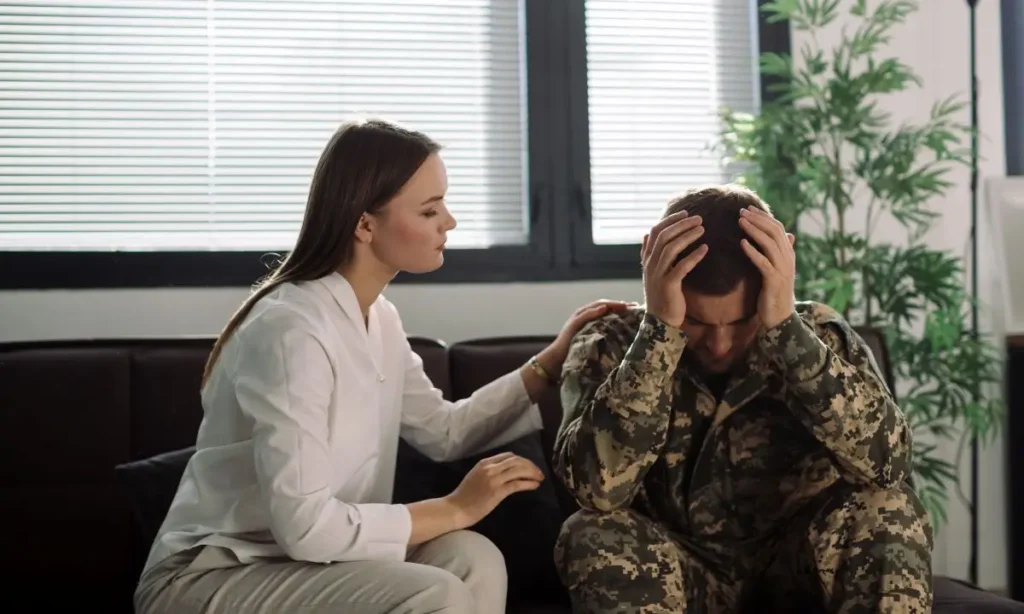Trauma happens when you go through something scary, like a car crash, violence, or abuse. It changes how you think, feel, and act every day. With trauma-focused CBT therapy, your brain can start healing and rebuild healthy ways to cope with triggers.
What Is Trauma-Focused CBT?

TF-CBT helps people work through difficult memories and learn good ways to cope. Most people attend these sessions for a short-term period to help them navigate past traumas safely on their own.
Although first developed for kids and teens, people of all ages can use this therapy today if they have trauma symptoms. Trauma-focused CBT has three main parts:
- Learning about trauma and what it does to your brain
- Building skills to handle hard emotions and thoughts
- Working through trauma memories in a safe way
Trauma-Informed Therapy vs. Standard CBT
Regular CBT therapy helps change negative thoughts and behaviors. It works well for many mental health problems. But it may have limitations when it comes to healing from the unique ways trauma affects the brain and body.
TF-CBT stems from regular CBT but includes aspects specific to trauma. With trauma nuances at the forefront, it helps individuals work through tough memories in safe and productive ways.
How TF-CBT Helps the Brain Heal
Trauma shifts how your brains work in three crucial ways. After trauma, your brain stays on high alert and makes you feel scared all the time. It has trouble storing memories properly. It also makes it hard to control your emotions and think clearly.
CBT for trauma helps fix these problems by working on:
- Emotion control: Noticing and handling big feelings
- Bad thought patterns: Identifying unhelpful thoughts
- Staying away: Slowly facing situations you’ve avoided
The brain needs practice to make new patterns, and TF-CBT provides a healthy way to do this. For those with deep struggles related to trauma, specialized CBT can form part of larger PTSD treatment.
CBT Exercises and Supporting Tools for Trauma

Special tools can help people learn real skills for handling trauma symptoms.
Cognitive Restructuring Tools
- Thought Record Worksheet:
This helps people confirm or deny negative thoughts. People write down what triggered them, what they thought, and proof for and against those thoughts. - ABC Model:
This breaks situations into three parts: what happened (A), what we tell ourselves about it (B), and how we feel and act (C). - Cognitive Triangle:
This picture shows how thoughts, feelings, and actions are all connected. Changing one part can help improve the others.
Grounding and Self-Regulation
- 5-4-3-2-1 Grounding Technique:
When overwhelmed, find 5 things you can see, 4 things you can touch, 3 things you can hear, 2 things you can smell, and 1 thing you can taste. - Deep Breathing Cards:
These cards give step-by-step directions for breathing exercises that help calm you down when you’re feeling stressed. - Safe Place Visualization:
Visualization like this encourages you to create a detailed picture in your mind of a place where you feel wholly safe and relaxed.
Emotion Identification and Expression
- Feelings Wheel:
This round chart helps you identify specific emotions beyond basic feelings like “good” or “bad.” This helps you recognize how you feel. - Feelings Thermometer:
This rates how strong emotions are on a scale of 1–10. It helps people notice when feelings are getting too large. - Body Map Worksheet:
With a worksheet like this, you can mark where you feel different emotions in your body. This helps see where you hold your trauma physically.
Trauma Narrative Tools
- Trauma Narrative Template:
This guides you through telling your story in a planned way that feels manageable and less intimidating. - Trigger Hierarchy Worksheet:
A hierarchy helps you find and rank your trauma triggers from least to most upsetting. This can make healing each one more organized. - Distress Rating Scale:
By rating how upset you feel when thinking about trauma memories or triggers, you can unpack the reasons behind them.
Who Can Benefit From TF-CBT?

Trauma-focused cognitive-behavioral therapy helps with different trauma symptoms:
- Nightmares and flashbacks
- Inability to control emotions
- Always feeling unsafe
- Avoiding trauma reminders
This works well for those with PTSD, complex trauma from events like combat, or those who were hurt as children. Many people find TF-CBT helpful because it’s more organized than open-ended talk therapy. Those who feel overwhelmed by unstructured conversations often like having specific tools and clear steps.
How TF-CBT Forms Part of Mental Health Treatment
Trauma therapy that involves CBT can happen in one-on-one therapy sessions, group settings, or family therapy. Many people do better when they combine individual work with group support.
TF-CBT usually forms part of a bigger treatment plan. For people with other problems, like depression, this therapy might be combined with other approaches. It can also form part of healing in program levels of care, whether it’s day treatment or standard outpatient care.
How Many Sessions Do You Need?
Most people finish TF-CBT in 12–20 sessions. This changes based on:
- How bad and complicated the trauma is
- How long symptoms have been around
- Individual coping skills and support systems
- Whether there are other mental health problems
Some people notice improvements within the first few sessions, while others need more time to work through their experiences.
Heal From Past Trauma Mindfully

Trauma may have changed your life, but it doesn’t have to control who you are. Many people worry they’ll never feel “normal” again. But getting better is possible with the right support and treatment.
TF-CBT’s organized approach has helped thousands of people feel safe and in control again. The therapy gives you usable tools you can carry with you even after treatment. Reach out for therapy that fits your specific needs and makes healing possible. Taking that first step toward getting help is the root of mental wellness.



